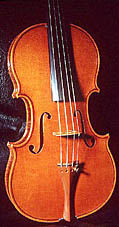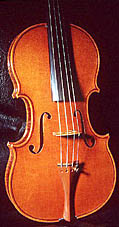
The Violin Comes to Yemen [Archives:1998/40/Culture]
October 5 1998
The Coming of the Violin to Yemen
In the late 1930s, during his revival of the Lahji folklore song, Ahmed Fadhl Al-Qomandan brought the violin as well as the lute from Egypt to Yemen.

In 1939, Fadhl Mohammed Al-Lahji, the most famous lute player then, established the first band in Yemen equipped with a lute, a violin, a tambourine and an earthenware hand-drum. The band accompanied the singer Mosa’ad Al-Lahji when he recorded Al-Qomendan’s first works for Al-Taj Al-Adani Gramophones Company. Fadhl Al-Lahji also performed the song “Ya Laile Al-Noor” (O beautiful night).
B. Hadhramaut:
Mohammed Joma’ah Khan, the pioneer of the Hadhrami song, also established another band equipped with a lute, a violin, a tambourine, and a hand-drum. With this band, Khan recorded some of his songs for the Ja’afar-Phone Records Company in 1939.
The Violin & the Revivalist Movement:
During the last 1940s and the early 1950s, a new era for music began to dawn in Aden. The availability of all kinds of musical instruments in the local market enabled many young people to teach themselves to play musical instruments, especially the violin.
The Adeni Music League, led by Khalil M. Khalil, the pioneer of the Adeni song, was established at that time. The League had four violin players, in addition to musicians playing the lute, tambourine, and hand-drum. From then on, the violin began to be used as a main instrument by many bands in Yemen.
The Next Step:
In the early 1960s, Ahmed Qassem, inspired by the Arab Music Band, established his own band. It consisted of 12 players led by the famous Yemeni singer Mohammed Abduh Zaidi. The number of violins the band used was five. The band presented Qassem’s works at the Al-Baroodi theater in Aden.
After that, Mohammed Morshid Naji also established his own band, which comprised eight violin players in addition to the guitar, flute, samsameiah (a traditional Yemeni musical instruments), and a bass. They also employed the primer rhythm by using the tambourine and the hand-drum. This was the first Yemeni band with such a large number of musicians.
Violin and the Sana’ani Song:
The Yemeni singer Mohammed Sa’ad Abdullah was the first to employ the violin in performing the Sana’ani song. As he used to sing in many social events, he found that it would be a new experience if some violin players joined him. Although the Sana’ani song went with the traditional musical instruments like the lute and the tambourine, it appeared in a nice harmony with the sound of violin.
Balfqaqih, Mohammed Abdu and the Sana’ani song:
In 1972, Mohammed Abdu, the great Arab singer of today, was just starting. His nice voice, the new music arrangement and his wonderful artistic touches made the Sana’ani song popular all over the Arab world. Before that, nobody knew about the Yemeni musical compositions and rhythms.
Arab music bands always tried to avoid playing the Yemeni compositions because they did not know its suitable keys and rhythms. And it went on like this until Dr. Abdulrabb Idris showed its rhythm to be 10/8.
Mohammed Abdu started and Abu Bakr Salim Balfaqih continued the process. Representing many traditional Sana’ani songs in a new suit, he inserted the sounds of the violin and other new musical instruments. The Sana’ani songs “Wa Mogharred” (O singing bird) and “Rasooli Qoom” (go my messenger) found big success around the Arab world.
Thus, we see that the violin contributed to the fast popularity of the Sana’ani song.
In 1973, the Ministry of Culture opened the first institute for arts and music in Yemen. At the hands of Soviet and Egyptian professors, many Yemeni students received diplomas in playing the violin, cello, and other musical instruments. Others went to the Soviet Union and Germany for higher studies.
In 1983, a new musical band was established equipped with 6 first violins, 6 second violins, 2 cellos, 2 basses, drums and hand-drums, a lute, and a zither. With a new harmony and a classic musical arrangement, the band played Ahmed Fathi’s “Awdat Balquis” (the return of Balquis). One of the good things about it is that the team, for the first time, used a formal musical note on playing this operetta.
By Saleh Abdulbaqi,
Arts Editor
Yemen Times
——
[archive-e:40-v:1998-y:1998-d:1998-10-05-p:./1998/iss40/culture.htm]


